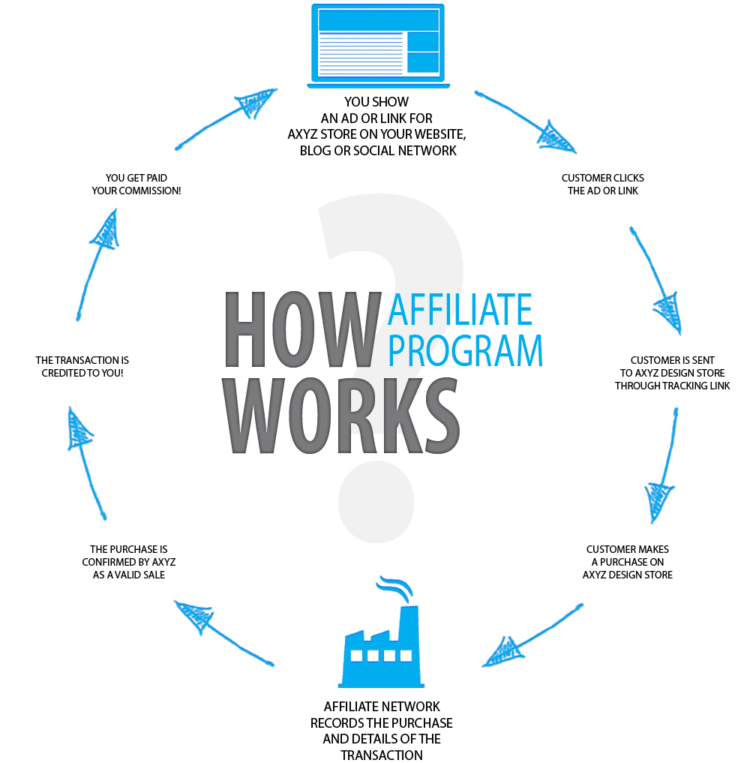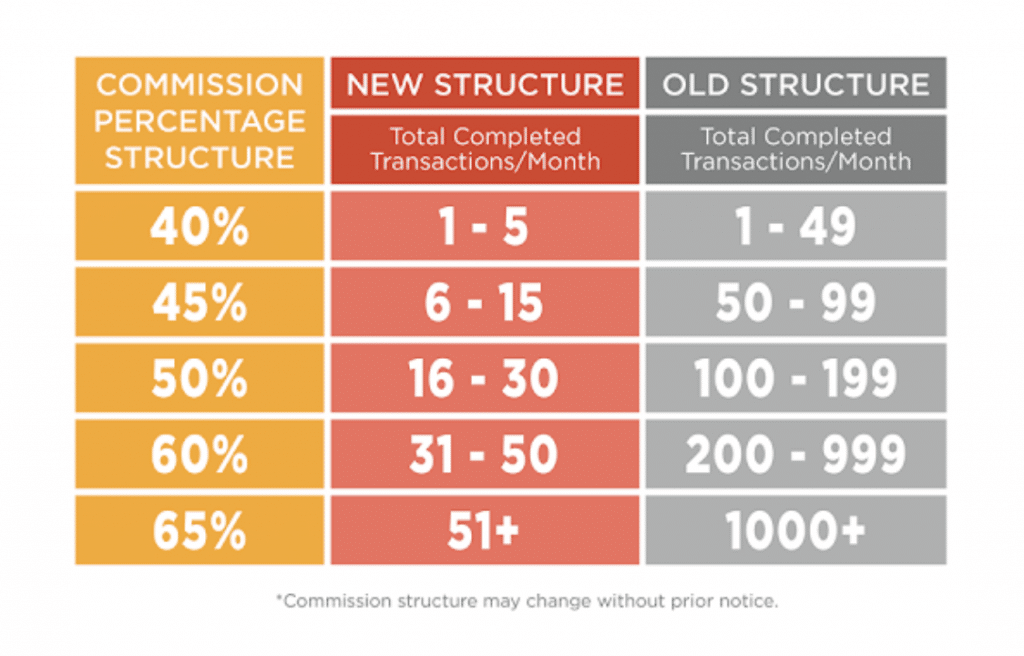Affiliate program leads are a great way to improve your business while reducing ROI. By recruiting a team of motivated individuals (affiliates) and offering them a commission to bring in these leads, you can help spread the word about your company and increase your sales. Learn the key ways to establish affiliate commission rates for your partners, and how you can lead to high sales rates through an affiliate marketing plan.
What is an affiliate commission rate?
An affiliate commission is money that you pay out to a marketing partner who helps bring in leads for your company. Affiliate commissions are paid to your partners every time a sale is closed. The affiliate gains compensation for bringing in the lead, usually with a monetary reward. The commissions earned are kept track of with an affiliate link that partners can place on their website, or share in another way, such as via email or through social media.
By paying a commission, you are motivating your marketing partners to lobby on your behalf. With an incentive in mind, they are more willing to share your brand and encourage others to sign up.
This works great for a multitude of businesses, whether you’re looking for auto insurance leads, banking partners, or other growth opportunities.
However, you’ll need to ensure you are setting up the right commission structure and rates. The commission has to be an amount that is motivating, but also one that your company can afford to pay out with each sale.
When setting your best affiliate commission for a sale, take a look at these best practices.

Commissions, from the affiliates’ perspective.
1. Check out your competitors’ commission rates
It’s very likely that your competitors may already be using commissions to help grow their sales and customer base. The good news is that you can research their affiliate programs and allow this research to help you find the best parts for yourself.
Determine how much others are paying their affiliate partners. This can help you create a rate that’s attractive to potential affiliates, but not too far above what the competition is offering so you don’t overpay. Note if competitors’ rates look fair, especially in relation to the price point of what you’re selling.
Competitors include both direct business competitors and others who share a niche and audience, as all are likely competing for the same affiliates. Look at who is working in the same space and how well their programs are working. Doing so can provide key insight.
2. Use your competitors’ commission rates to inform your own
Once you have data from competitors, including affiliate networks, you can follow these steps and gain info on creating your ideal affiliate program.
- Payouts: In competing programs, what will trigger a payout? A sale from an affiliate link? A click? An email signup? Something else altogether? What will your own conversions look like and how will you accomplish them?
- Do competitors pay affiliates cash? Or store credit toward company goods or products?
- Do competitors pay out a percentage commission of the sales affiliates bring in? Or a fixed payout for each sale? What will their profit margin likely be?
- When looking at competitors, you should also consider if they are tracking cookies to place the sale. This is a way for affiliates to earn a commission, even if a lead buys days after they were taken to the site by a marketing partner. If competitors are using cookies, how long will your own cookies allow affiliates to gain credit?
- Do others provide bonuses for extra sales or those who bring in the most business?
- What about tiers? Does the competition provide tiers, including higher commission rates, allowing those who bring more business to earn higher rates?
Overall, the aim is to create an affiliate program that’s sustainable for your business, and more sustainable than the competition’s … but without turning potential affiliates away. Your program should still be attractive enough for them to want to remain on board.
3. Decide which type of affiliate program commission you’ll use
There are two main types of reward structures for affiliate programs: cash and store credit. You will need to be up front with the information for your affiliate manager. Depending on the industry you work in, you may find affiliate partners who are willing to work to gain credit to your store. But in most cases, cash is provided to affiliates for their successful leads.
You can also structure the program in two ways: flat rate or percentage. With flat-rate, affiliate marketers earn a set amount for each rewardable action (once you’ve decided what that will be, potentially a lead, or perhaps sales only). Affiliates can also earn a percentage of each sale.
4. Figure out your average customer lifetime value (CLV)
Now it’s time to look at your CLV – customer lifetime value – and how it relates to your affiliate marketing program. When a customer signs up, on average, how long will they stick with your brand? On average, how often will they order? And therefore, how much revenue will they bring in? This number can help you determine how much a customer is worth to you as a company.
Each customer’s revenue will be the total that they bring in throughout their tenure as your customer, minus the acquisition cost. (In an affiliate program, the acquisition cost is the payout to the affiliate partner.) Consider how high commission rates can contribute to the growth of retailers and top affiliates.
To learn more about a customer’s lifetime value, head here.
5. Start with a lower, but still attractive, commission
One way to keep your rates more sustainable when starting out is to keep a lower, yet still active, commission early on.
This keeps your affiliate partners happy, but keeps costs low. It also gives you room to increase over time, meaning you can offer more to partners as business increases, or as their leads grow. (It doesn’t have to be a blanket increase in payouts – it could be one just for your top performers.)
In any case, affiliates won’t be upset about an increase in payout from their associates’ program.
There are many benefits to using this type of structure. It allows you to tweak the program and to determine what’s working best for your average affiliate, too. Plus you can play around with different types of bonuses in order to see what entices affiliates, what works for your budget, and more.
6. Consider commission bonuses
Now it’s time to look at ways you can further reward your affiliate partners. As discussed above, there are many ways to structure this program, and you may want to experiment until you find what will work best for your business model and industry.
Different types of bonuses include:
● Bonuses for the top percentage of affiliates, on top of the average commission.
● Bonuses for reaching revenue goals after a base rate.
● Bonuses for reaching monthly or quarterly sales goals beyond the average order value.
● Permanent commission increases after reaching a certain “tier” of lifetime sales; great for seasoned bloggers with a following.
● Recurring commission bonuses on subscription renewals, including first-time buyers.
Bonuses could be paid out in cash, gift cards, or valuable swag.
With bonuses, a good affiliate could earn much more on top of their initial cash reward – so bonus potential is ideal for attracting high-ticket affiliates who draw in passive income. Meanwhile, lower initial commission rates can be a great marketing strategy for bringing in organic traffic from new affiliates, who haven’t yet proven themselves.
7. Set conditions for earning a commission

Before moving forward with an affiliate program, you should set guidelines in place, for the commission and more.
- Who is eligible for each commission?
- How can affiliates market your product? Through a search engine? A landing page plugin? In other ways?
- What conditions must affiliates meet to earn a commission?
- Do affiliates earn commission bonuses on customers with higher retention rates (etc.)?
- When is a commission paid out?
- And what other guidelines do you want your affiliates to follow?
Each of these should be considered when moving forward with your affiliate commission program.
Setting guidelines before you start allows your partners to know what’s expected of them, and what they can and cannot do with the affiliate link. It’s a move that protects all involved, and allows you to weed out any non-rule followers before they ever get started with your program and have a chance to drain cash unethically. Help protect your brand by creating rules for program commissions.
Here are some key commission conditions you’ll need to establish:
Will commissions be paid for leads, or only for sales?
Determine when each partner will earn a payout. With a closed sale? What about when a click is earned from an affiliate link? Another action, such as an email signup or social media follow? List out what actions earn your affiliates their commission. The action you pay for largely depends on your business goals, and how much you stand to earn from each action. Look at these stats before putting set guidelines into place.
Remember that you can always start low and increase later, but it’s unlikely that your affiliates will want to lower their earned rates once signing on with your brand.
For B2C ecommerce brands, it’s usually best for your business to only pay for sales, but you might pay smaller amounts for leads if competitors do the same. If you’re a B2B in an industry where it takes longer for leads to convert, consider paying smaller commissions for qualified leads as well as larger ones for sales.
Will affiliates only keep the commission if there is no return/cancellation?
What happens in the event of a return? Or if a customer cancels their order/subscription? Will you still pay out the commission fee? Doing so could cut into your profits, but you also need to create a setup that’s fair for your affiliate partners. This is one more aspect that needs to be listed in your affiliate agreement so that everyone remains on the same page.
Will you set up affiliate tracking cookies? If so, how will they work?
Now it’s time to decide if you will use tracking cookies for your affiliate partners. Cookies are a way for you to track where leads to your site came from, that way an affiliate partner can still receive a commission, even when a new customer doesn’t purchase that same day. It’s important to determine how long the cookies will last too, so you can communicate this with your affiliates. Determine how the cookies will be used on your site and how long they will last for an effective way to move forward with your affiliate program.
You might also create a program where commissions are only paid when purchases are made that same day. However, for larger companies and B2B services, keep in mind that customers will plan to do more research on your site. Therefore, cookies can allow customers time to learn more about your brand before pulling the trigger.
8. Check your commission rate frequently to stay competitive
Once you have your program commission in place, it’s important to check up on your rates from time to time. Follow up on competitors to see if their rates have changed, and see if your partners are still motivated to make sales through your affiliate program.
Doing this can help you ensure that your brand is staying competitive against other affiliate programs, and that your partners are remaining motivated to move forward with your brand.
Keep your affiliates from wandering to others’ programs by ensuring your program is staying competitive.
Checking up on your numbers and rates can also allow you to recoup funds in slower months. If numbers are low, you can offer a surprise sale or limited-time offer for your affiliates to promote. Doing so can boost numbers for the month with a sale. Prospects that have limited offers can also encourage others to buy quickly, before the sale is no longer valid.
Conclusion
Working with affiliate partners to market your brand can do wonders for profit growth. By setting up a program that helps your bottom line and encourages others to share your mission, you can greatly increase ROI through word-of-mouth marketing. This is especially true for niche markets. By incentivizing those who have an expansive reach in your industry with valuable commissions, you can reach new corners of customers and teach them about your business from a person they know and trust.
To learn more about how you can use affiliate software to help keep track of commissions and pay them out automatically, check out this comprehensive guide.
